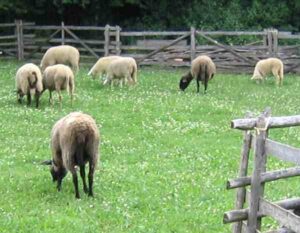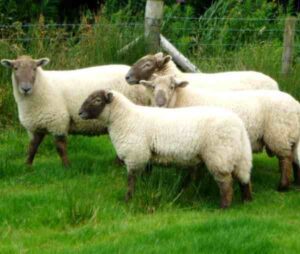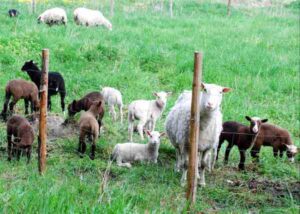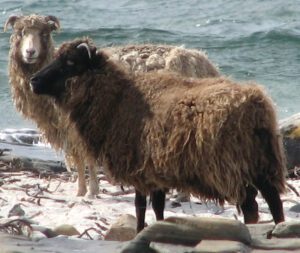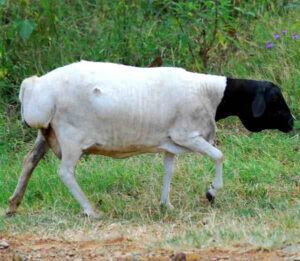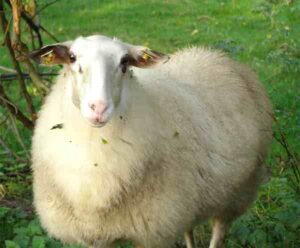The Hebridean sheep is a breed of domestic sheep originated in the islands off the western coast of Scotland. It a small breed, similar to other members of the Northern European short-tailed sheep group.
It was previously known as St Kilda sheep and now classified as rare. The breed was once common throughout Scotland, but were superseded by the Blackface.
Main population of this breed is now largely found on estates where their black fleece, light amber eyes and multiple horns make them a striking animal.
The sheep were small, short-tailed and varied in color which were kept throughout Britain up to the Iron Age. Those sheep survived into the nineteenth century in the Highlands and islands as the Scottish Dunface.
The Dunfaces had various local varieties, most of which are now extinct. The last known native Hebridean sheep survived on Uist, and in the 1880s some were taken from there to Storr Hall at Windermere in Cumbria, northern England.
Those animals were used and distributed as an ornamental animal to various estates in England and Scotland.
The ornamental Hebridean sheep were identified by the Rare Breeds Survival Trust in 1973 as being in need of conservation.
The breed has been revived since then, and it is no longer considered as rare.
And today it is kept in many parts of the world, now including it’s native Hebrides. However, read some more information about this breed below.
Hebridean Sheep Characteristics
The Hebridean sheep are smaller sized animals with solid black face and legs. They have generally black fleece, but they may become gray with age.
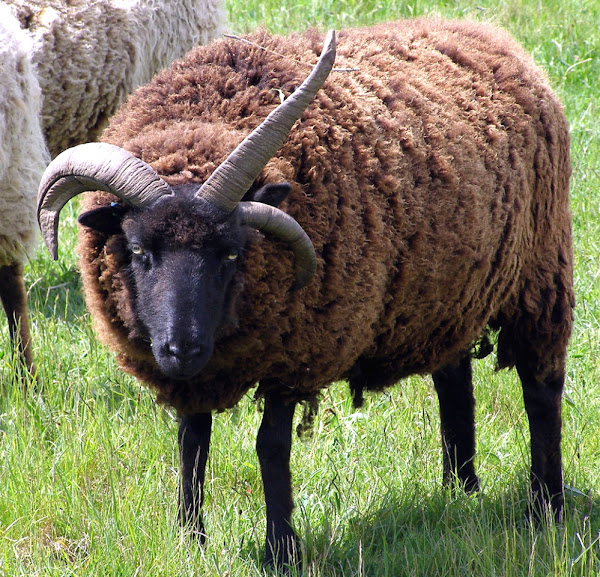
Both rams and ewes are generally horned, with either 2 or 4 horns. 4 horned Hebridean sheep are most common. They usually don’t have wool on their faces and legs.
Hebridean sheep are considerably smaller in size than most other domestic sheep breeds.
Average live weight of the fully grown rams is between 50 and 60 kg. And live body weight of the mature ewes is around 40 kg. Photo and info from Wikipedia.
Uses
Hebridean sheep are mainly used for ornamental purposes. They are also very good for vegetation management.
Special Notes
The Hebridean sheep are smaller sized animals, but they are very hardy as compared to their body size.
They can usually do well in most climates, and they have also shown a greater tendency to browse than other sheep breeds. And this quality has made them very useful in ecological projects, where the control of weeds and brush was needed.
It has been reported that the muscle tissue and fats of the Hebridean have significantly less cholesterol than other well known breeds.
The fleece of the Hebridean sheep usually weights between 1.5 and 2.25 kg, with a staple length of 5 to 15 cm. And the wool quality being 44’s to 50’s. However, review full breed profile of the Hebridean sheep in the following chart.
| Breed Name | Hebridean |
| Other Name | Also known as St Kilda sheep |
| Breed Purpose | Vegetation management |
| Special Notes | Hardy and active animals, can adapt themselves to almost all climates, excellent browsers, very useful in ecological projects where the control of weeds and brush is needed, pretty good for wool |
| Breed Size | Small |
| Weight | Mature rams weight is between 50 and 60 kg, and ewe’s body weight is around 40 kg. |
| Horns | Yes |
| Climate Tolerance | Almost all climates |
| Color | Black or gray |
| Rarity | Common |
| Country/Place of Origin | Scotland |
